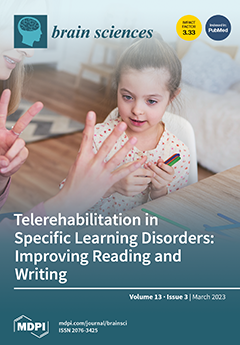Depression is a serious psychological disorder which negatively affects human feelings and actions. The use of antidepressants is the therapy of choice while treating depression. However, such drugs are associated with severe side effects. There is a need for efficient and harmless drugs. In this connection, the present study was designed to synthesize several substituted benzodiazepine derivatives and explore their antidepressant potentials in an animal model. The chalcone backbone was initially synthesized, which was then converted into several substituted benzodiazepine derivatives designated as
1–
6. The synthesized compounds were identified using spectroscopic techniques. The experimental animals (mice) after acclimatation were subjected to forced swim test (FST) and tail suspension test (TST) after oral administration of the synthesized compounds to evaluate their antidepressant potentials. At the completion of the mentioned test, the animals were sacrificed to determine GABA level in their brain hippocampus. The chloro-substituent compound (
2) significantly reduced the immobility time (80.81 ± 1.14 s;
p < 0.001 at 1.25 mg/kg body weight and 75.68 ± 3.73 s with
p < 0.001 at 2.5 mg/kg body weight dose), whereas nitro-substituent compound (
5) reduced the immobility time to 118.95 ± 1.31 and 106.69 ± 3.62 s (
p < 0.001), respectively, at the tested doses (FST). For control groups, the recorded immobility time recorded was 177.24 ± 1.82 s. The standard drug diazepam significantly reduced immobility time to 70.13 ± 4.12 s while imipramine reduced it to 65.45 ± 2.81 s (
p < 0.001). Similarly, in the TST, the compound
2 reduced immobility time to 74.93 ± 1.14 s (
p < 0.001) and 70.38 ± 1.43 s (
p < 0.001), while compound
5 reduced it to 88.23 ± 1.89 s (
p < 0.001) and 91.31 ± 1.73 s (
p < 0.001) at the tested doses, respectively, as compared to the control group immobility time (166.13 ± 2.18 s). The compounds
1,
3,
4, and
6 showed weak antidepressant responses as compared to compounds
2 and
5. The compounds
2 and
5 also significantly enhanced the GABA level in the brain’s hippocampus of experimental animals, indicating the possible involvement of GABAergic mechanism in alleviating the depression which is evident from the significant increase in mRNA levels for the α subunit of the GABA
A receptors in the prefrontal cortex of mice as well. From the results, it can be concluded that compound
2 and
5 could be used as alternative drugs of depression. However, further exploration in this connection is needed in other animal models in order to confirm the observed results in this study.
Full article






